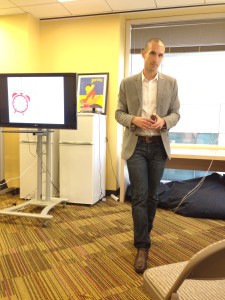Over the past decade, companies have increased their focus on and investments in employee engagement. But engagement levels across the world have stagnated or are on the decline. Why?
Jacob Morgan thinks the problem lies in how companies approach engagement. A best-selling author and futurist, Morgan has found through extensive research that companies too often address employee engagement through short term perks that have nothing to do with changing the core business practices of the organization. He summarizes this approach as “distracting employees from the sad realities of their work situations.”
The rise of the “employee experience” movement is all about changing the core workplace practices of organizations and redesigning work around the people who work there. And why not? After all, executives go to great lengths to understand their customers through analytical tools, and yet they don’t do the same to understand employees. As Morgan told Adrian Swinscoe in an article for Customer Think, “Most organizations assume that employees ‘just work for us’.” The employee experience approach, on the other hand, has given rise to managers with titles like SVP of Customer and Employee Experience, as Adobe has.
Morgan analyzed over 250 organizations around the world and details his findings in his new book, The Employee Experience Advantage: How to Win the War for Talent by Giving Employees the Workspaces they Want, the Tools they Need, and a Culture They Can Celebrate. Through his research, Morgan found that every single employee experience is a combination of three environments: culture (the side effects of working for your organization), technology (the tools employees use to get their jobs done), and physical space (the actual spaces in which employees work). I found it interesting that in creating his Employee Experience Index, Morgan assigned 3 attributes for technology, 4 for physical space and 10 for culture.
Using this index, Morgan found that only 15 companies out of the 252 that he analyzed did an “amazing” job of investing in employee experiences:
- Facebook
- Google
- Apple
- Linkedin
- Ultimate Software
- Airbnb
- Salesforce
- Accenture
- Microsoft
- Riot Games
- Hyland Software
- Cisco
- Amazon
- Adobe
- World Wide Technology
I noticed that four of these companies were organizations that had separately been rated by PEOPLE as “Companies that Care.” Four of these companies have also been rated by Forbes as one of the “Best Companies to Work For.” But there are dozens of companies on both of those lists that didn’t make the cut of Morgan’s top 15 companies that invest in the employee experience.
“I absolutely believe that employee experience is the next big area of investment for organizations around the world,” Morgan wrote on Inc. “Every organization can exist without technology, but no organization can exist without people. Investing in these three environments will ensure that your organization will be able to attract and retain top talent, and outlast the competition.”
And the investment pays off. As Morgan told Swinscoe, organizations that invest in employee experience tend to experience more productivity, happier employees and a better talent pipeline. They tend to rank and appear – up to 40 times more often – on lists of the most innovative organizations and the best places to work. The best organizations for employee experience tend to exhibit four times more profit per employee, three times higher revenue per employee, they’re 24% smaller and have a rate of staff turnover that is 40% lower than the average organization. In terms of stock price, the best organizations for employee experience tend to significantly outperform all the major stock indexes.
Morgan points to how companies like Cisco are putting new emphasis on the employee experience and have redesigned their workplace practices (note that Cisco helped support Morgan’ research project.) For example, they encourage executives to be more approachable and act more like coaches and mentors, and they give many of their managers training around emotional intelligence so they can better connect with their employees.
Morgan’s advice to company leaders interested in improving the employee experience is to start by talking to their people. The more you know your employees and treat them as individuals as opposed to workers, the more aligned they’ll feel with your company.
And here’s where I’ll add that from my vantage point as an expert in corporate volunteer programs, one way to help connect to your employees and community – and help them feel connected to your company – is through social impact programs. Corporate philanthropy efforts led by employees may not be the only key to a positive employee experience, but I’ve seen that nowadays you can’t really have a successful employee experience without an active corporate culture of giving back.
Digital & Social Articles on Business 2 Community(68)








